| [1] Takeuchi K, Yokoyama T, Aburakawa S, et al.Axial symptomsectom fter cervical laminoplasty with C1 laminectomy compared with conventional C3-C7 laminoplasty:a modified laminoplasty reserving the semispinalis cervicis inserted into axis. Spine(Phila Pa 1976).2005;30:2544-2549.[2] Dean CL, Gabriel TP, Cassinelli EH, et al. Degengerative spondylolisthesis of the cervical spine:analysis of 58 patients treatment with anterior cervical decompression and fusion. Spine.2009;9(6): 439-446.[3] Lee MJ, Bazaz R, Furey CG, et al.Influence of anterior cervical plate design on dysphagia:a 2- year prospective longitudinal follow- up study.Spinal Disord Tech.2005; 18(5):406-409.[4] Vaccaro AR, Falatyn SP, Scuderi GJ, et al.Early failure of long segment anterior celvical plate fixation. J Spinal Disord.1998;11(5):410-415.[5] Bazaz R, Lee MJ, Yoo JU.Incidence of dysphagia after anterior cervical spine surgery:a prospective study. Spine(Phila Pa 1976).2002;27(22):2453- 2458.[6] Terai T, Faizan A, Sairyo K, et al. Operated and adjacent segment motions for fusion versus cervical arthroplasty: a pilot study. Clin Orthop Relat Res.2011; 469(3): 682-687.[7] Pitzen TR, Chrobok J, Stulik J, et al. Implant complications, fusion loss of lordosis, and outcome after anterior cervical plating with dynamic or rigid plates: two-year results of a multi-centric, randomized, controlled study. Spine.2009;34(7): 641-646.[8] 陈朦村,杨述华,杨操,等.可吸收同定板在脊髓型颈椎病前路减压融合术中的应用[J].中华骨科杂志,2015,35(6):602-609.[9] 严力生,罗旭耀,鲍宏玮,等.ROI-C双嵌片自锁融合器在脊髓型颈椎病前路减压融合术中的应用[J].中华骨科杂志,2015,35(6): 610-616.[10] Dovrak MF, Pitzen T, Zhu Q, et al.Anterior cervical plate fixation:a biomechanical study to evaluate the effects of plate design,end-plate preparation,and bone mineral density. Spine. 2005;30(3):294-301.[11] Barsa P, Suchomel P, Buchvald P, et al. Multiple-level instrumented anterior cervical fusion :a riskfactor for pseudoarthrosis? A prospective study with a minimum of 3-year follow-up. Acta Chir Orthop Trauma Cech.2004;71(3) : 137-141.[12] Vanek P,BradacO,Delacy P,et a1.Anterior interbody fusion of the cervical spine with Zero—P spacer:prospective comparative study clinical and radiological results at a minimum 2 years after surgery. Spine(PhilaPa1976). 2013; 38(13):E792-797.[13] Fountas KN, Kapsalaki Ez,Nikolakakos LG,et al.Anterior cervical diseectomy and fusion associated complications. Spine. 2007;32(21):2310-2317.[14] Chin KR, Eiszner JR, Adams SB Jr. Role of plate thickness as a cause of dysphagia after anterior cervical fusion. Spine. 2007;32(23):2585.[15] Fogel GR, McDonnell MF.Surgical treatment of dysphagia after anterior cervical interbody fusion. Spine J.2005;5(2): 140-144.[16] 李建光,苗军,夏群援.前路椎间融合器在多节段脊髓型颈椎病治疗中的应用[J].中华骨科杂志,2007,27(8):576-579.[17] 张圣飞,冯新民,张亮,等. 颈椎Zero-P融合器与传统钛板融合内固定治疗双节段颈椎病的疗效比较[J]. 中华临床医师杂志:电子版,2015,(11):2107-2112.[18] 缪锦浩,匡勇,陈德玉,等.颈前路减压零切迹椎间植骨融合内固定系统治疗颈椎病的早期疗效分析[J].中国脊柱脊髓杂志, 2012,22(6):536-540.[19] 贺瑞,尚希福,张文志,等.零切迹颈前路椎间融合固定系统在颈前路融合术中的初步应用[J].颈腰痛杂志,2012,33(2):92-94.[20] Garrido BJ, Wilhite J, Nakano M, et al.Adjacent-level cervical ossification after Bryan cervical disc arthroplasty compared with anterior cervical discectomy and fusion.J Bone Joint Surg Am.2011;93(13):1185-1189.[21] Ji GY, Oh CH, Shin DA, et al.Stand-alone Cervical Cages versus Anterior Cervical Plates in Two-Level Cervical Anterior Interbody Fusion Patients: Analysis of Adjacent Segment Degeneration. J Spinal Disord Tech. 2013 Jul 26. [Epub ahead of print].[22] Park JB, Cho YS, Riew KD. Development of adjacent-level ossification in patients with an anterior cervical plate. J Bone Joint Surg(Am).2005;87(3):558-563.[23] Yang JY, Song HS, Lee M, et al. Adjacent level ossification development after anterior cervical fusion without plate fixation.Spine.2009; 34(1):30-33.[24] Scholz M, Schnake KJ, Pingel A, et al. A new Zero- Profile implant for stand-alone anterior cervical interbody fusion.Clin Orthop Relat Res. 2011(469):666-673.[25] Barbagallo GM, Romano D, Certo F, et al.Zero-P:a new zero-profile cage-plate device For single and multilevel ACDF. A single in stitution series with four years maximum follow-up and review of the literature on zero-profile devices. Eur Spine J.2013;22:868-878. |
.jpg)
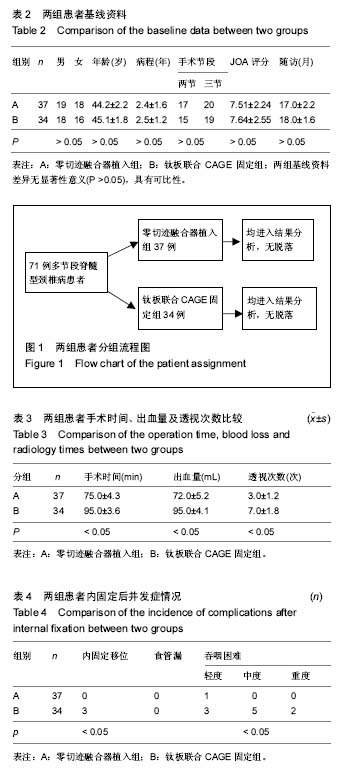
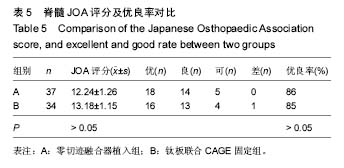
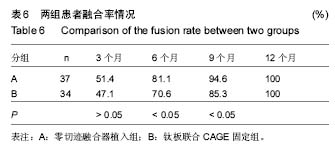
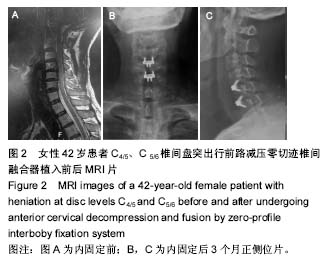
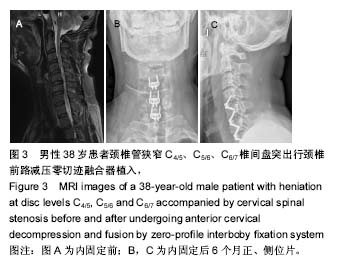
.jpg)
.jpg)